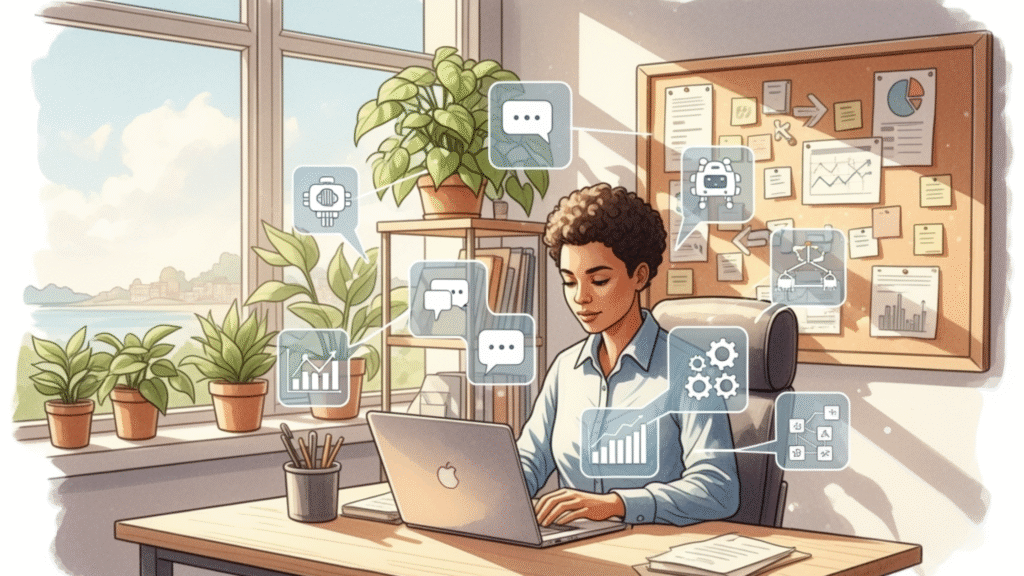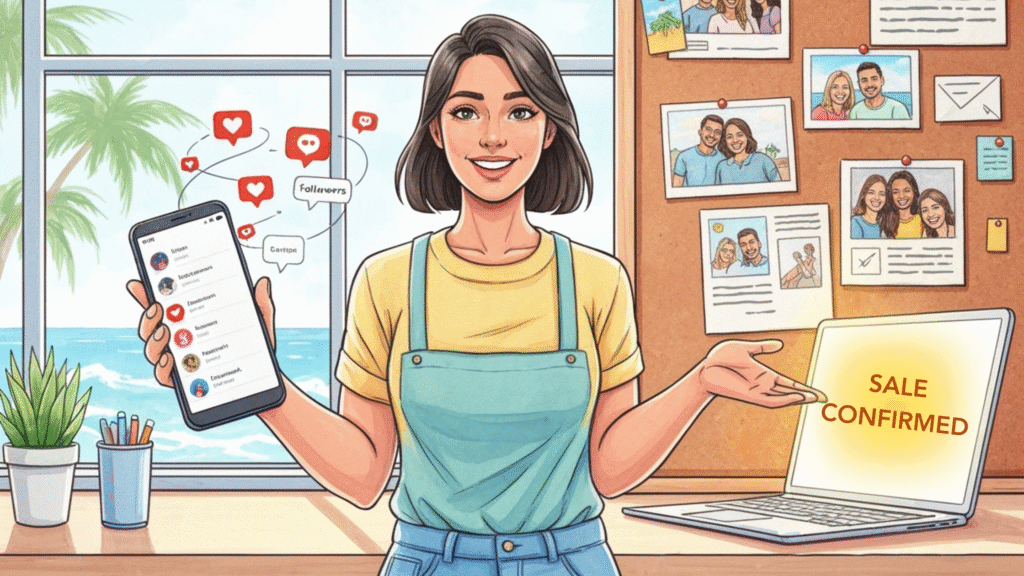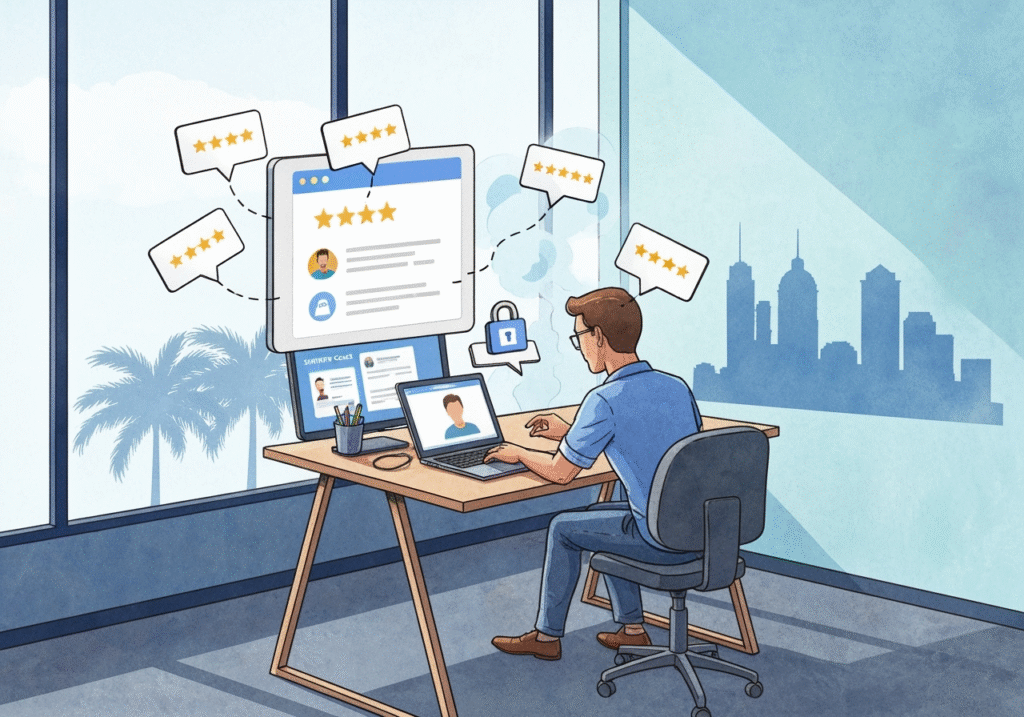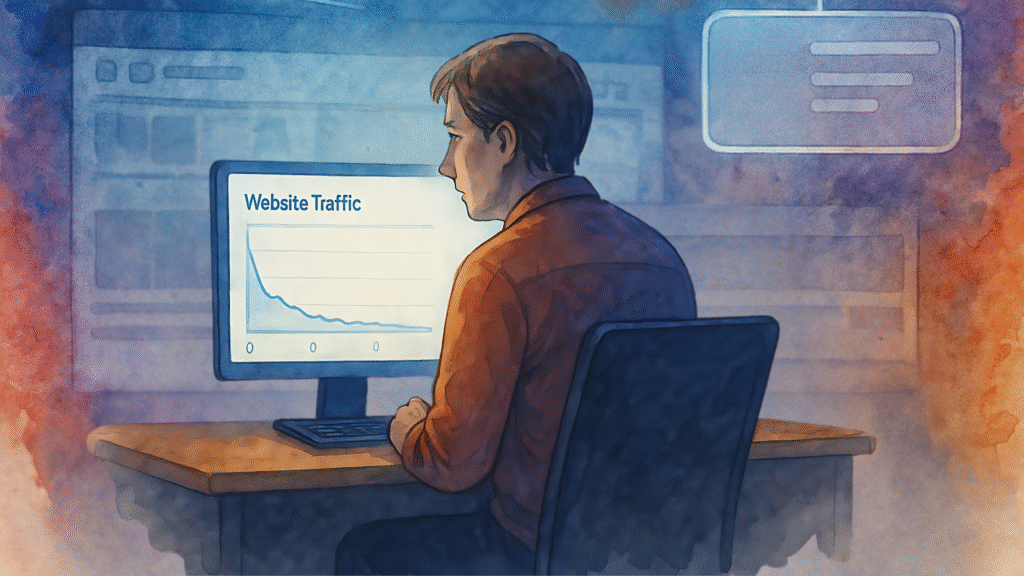You’re running a business alone. You’re wearing the CEO hat, the sales hat, the marketing hat, and somehow, you’re also supposed to be the customer service department. It’s exhausting. You’re fielding messages across email, social media, text, and maybe voicemail. Customers are waiting for responses. Your inbox is chaos. And somewhere in the back of your mind, you’re wondering if you should hire someone just to handle customer support.
Here’s what nobody tells you: you don’t necessarily need to hire anyone yet. In fact, the most successful solopreneurs and small business owners are using DIY customer service strategies combined with smart automation to build fierce customer loyalty. They’re doing more with less, and their customers feel more valued than ever.
The secret? It’s not about working harder. It’s about working smarter.
This is especially true for businesses in Sarasota, where the competitive landscape is intense. From downtown to Lakewood Ranch, from Siesta Key to St. Armands Circle, local entrepreneurs are discovering that exceptional customer service delivered by one person can be the differentiator that sets them apart from bigger competitors.
The Economics of DIY Customer Service in 2025
Let’s talk numbers because they tell an important story. Getting a new customer costs five times more than keeping an existing one. That’s not new information, but what’s critical is this: a five percent increase in customer retention can boost profits by 25 to 95%. See Harvard Business Review for a classic summary of loyalty economics.
Think about that. Not 25 to 95% more customers. Not 25 to 95% more revenue. That’s profit growth. Which means if you’re already serving customers, the highest-leverage thing you can do right now is keep them happy.
Here’s where it gets even more interesting for solopreneurs. According to 2025 data, 61% of small businesses say that over half their revenue comes from repeat customers. Not new customers. Repeat customers. The ones you’ve already won over. (You can sanity-check this directionally with small business studies from Semrush and Shopify.)
This is the foundation of DIY customer service success. When you understand that your existing customers are worth multiples more than potential new customers, suddenly investing time in exceptional service becomes a no-brainer. You’re not just being nice. You’re being profitable.
The numbers back this up in other ways too. Loyal customers spend 67% more than new customers, small ecommerce businesses generate 35% of their revenue from their top 5% of loyal, repeat customers, and when customers commit to a brand, 59% of US consumers will stay loyal to that brand for life. For more retention data, browse Bain & Company on loyalty economics and HBR.
That loyalty doesn’t happen by accident. It happens through consistent, responsive, personalized customer service.
Why 2025 is the Perfect Year for DIY Customer Service
Several things have converged in 2025 to make solo customer service more viable than ever.
First, there’s artificial intelligence. Unlike previous years, AI in 2025 is actually useful. Generative AI tools can help you draft responses, manage customer data, and even handle routine inquiries. More importantly, 80% of customer service and support organizations will use generative AI to improve agent productivity and overall customer experience this year. See trend summaries from Zendesk CX Trends and Gartner.
Second, there’s automation. You no longer have to manually respond to every single inquiry. Workflows can be automated. Follow-ups can be scheduled. Data can be organized without your direct involvement. Tools that once required a dedicated team can now be managed by a solo operator who knows how to set them up properly.
Third, customer expectations have shifted in a way that actually benefits solopreneurs. Yes, customers expect fast responses (speed is a top driver of satisfaction). See Jay Baer’s The Time to Win for current research on responsiveness. Yes, they expect personalization. But here’s the secret: 82% of US customers would still rather interact with a human than a chatbot. Hybrid wins. See consumer preference polling summarized by Salesforce and Pew Research.
The Customer Service Expectations Shift: What Customers Actually Want in 2025
More than two-thirds of customers now want organizations to reach out to them with proactive notifications rather than waiting for them to report a problem. Gartner has long forecast that proactive interactions would overtake reactive service.
This is huge for DIY customer service operators. It means you can’t just respond when problems occur. You need to anticipate issues before they happen. A customer hasn’t opened your product in a week? Reach out with a helpful tip or check in to see if they’re having trouble. You notice a customer buying the same thing repeatedly? Make sure they know about bulk discounts or upgraded options. You see someone hasn’t made a purchase in a month? Send a personal note checking in.
Second, customers expect personalization like never before. Salesforce’s State of the Connected Customer shows rising expectations for contextual, tailored experiences. The days of generic responses are over.
Third, customers are paying attention to consistency. 75% of customers expect a consistent experience across multiple channels. If they email you and get a friendly, helpful response, but then message you on Instagram and get a robotic answer, that inconsistency undermines trust.
For DIY operations, this means you need a system to track all customer interactions in one place, regardless of channel. One unified inbox, organized data, consistent voice.
The One Metric That Actually Matters for DIY Customer Service
Before you set up systems or choose tools, understand this: what gets measured gets managed.
For solopreneurs, the most important metric to track is customer retention rate (CRR).
CRR = (Customers at End of Period − New Customers Gained) ÷ Customers at Start of Period
If you start a month with 100 customers, end with 110, and acquired 15 new customers, your retention rate is (110 − 15) ÷ 100 = 95%
Only 44% of companies actually measure retention. Start now, and you are already ahead. For satisfaction, note that a one-point increase in customer satisfaction can move financial outcomes; explore summaries in HBR and ACSI.
Building Your DIY Customer Service Infrastructure
Step 1: Choose Your Central Hub
You need one place where all customer conversations live, regardless of channel. Good options:
- CRM: HubSpot CRM (free), Zoho CRM, Bigin by Zoho, Pipedrive
- Help desk: Freshdesk, Help Scout, Hiver
- Social inbox: Hootsuite, Buffer
If you want live chat, try Intercom, Drift, or Crisp.
Step 2: Set Up Automation Rules
Create automation for common scenarios:
- Welcome sequence
- Order confirmations
- Post-purchase follow-ups
- Feedback requests via Typeform or SurveyMonkey
- Abandoned cart reminders
- Re-engagement campaigns
Scheduling links are a time saver: Calendly. For email automation on a budget: Mailchimp or ConvertKit.
Step 3: Implement an Omnichannel Strategy
Be present where your customers are:
- Instagram DMs
- Facebook Messenger
- SMS/WhatsApp via Twilio or WhatsApp Business
- Website live chat
Use a unified inbox to manage all of them from one place.
Step 4: Create Response Templates (Without Sounding Robotic)
Draft friendly, personal templates and then customize each one. Keep variables for first name, order number, and product.
Establish Response Time Expectations
According to Freshworks and independent research like The Time to Win, fast responses are a key driver of satisfaction.
Set realistic promises:
- Email: within 24 business hours
- Facebook or Instagram DMs: within 12 business hours
- Phone: call back within 4 business hours
- SMS: within 24 hours
Publish these on your website, social bios, and email signature.
The Role of AI in DIY Customer Service for 2025
Should you use AI? Yes, strategically.
- Chatbots for FAQs: Use Tidio or your help-desk bot to answer hours, shipping, and order status.
- AI-assisted drafting: Use ChatGPT or Claude to draft replies, then personalize.
- Sentiment analysis: Many CRMs and help desks include basic sentiment flags.
- Predictive follow-ups: Your CRM can surface churn-risk accounts for proactive outreach.
Remember, humans for complex moments. Customers prefer real people when emotions or edge cases are involved. See Salesforce research and Zendesk trends.
Building Genuine Customer Loyalty Through Personalization
Keep simple notes in your CRM:
- Personal details that matter
- Channel preferences
- Past purchases and reasons
Use those details later to prove you remember them. This is your small-business superpower.
Sarasota-Specific DIY Customer Service Strategies
- Leverage community: Reference local events and neighborhoods. Keep tabs on seasonality with Visit Sarasota County.
- Respect seasonal rhythm: Snowbird months are busy, summers quieter. Adjust automations and hours accordingly.
- Referral program: Use your satisfied customers as advocates. Offer a simple thank-you perk.
Creating a Loyalty Program Without Hiring Help
Try Smile.io or LoyaltyLion for an easy, automated loyalty layer. If you are just starting, even a basic points-for-purchases model works. For context on why loyalty programs pay, see Semrush’s loyalty stats roundup.
Suggested structure:
- Tier 1: Points for purchases
- Tier 2: Bonus points for reviews, referrals, and follows
- Tier 3: Early access and VIP support
Common DIY Customer Service Mistakes (And How to Avoid Them)
- Being unavailable during business hours: Publish hours and response windows, then meet them.
- Treating every customer the same: Segment by value in your CRM.
- Waiting for problems: Send proactive check-ins and tips.
- Forgetting data: Log notes after each interaction.
- Not measuring: Review retention, response time, CSAT, repeat purchase rate monthly.
Tools Every DIY Operator Needs in 2025
- Unified Inbox / Help Desk: Freshdesk, Help Scout, Hiver
- CRM: HubSpot CRM, Zoho CRM, Bigin
- Live Chat: Intercom, Drift, Crisp
- Chatbots: Tidio, Ada
- Scheduling: Calendly
- Email Automation: Mailchimp, ConvertKit
- Feedback: Typeform, SurveyMonkey
- Analytics: Google Analytics 4
- Loyalty: Smile.io, LoyaltyLion
- Project Management: Notion, Todoist
Start with three tools. Add more once you are comfortable.
The Financial Case for DIY Service
A quality full-time customer service representative can cost $50,000 to $70,000 per year including benefits and overhead. A lean DIY stack is often under $5,000 per year in software. Pair that with a five percent lift in retention, and the economics quickly favor systems over headcount. See HBR’s retention analysis for why small improvements compound.
Your 30-Day DIY Customer Service Implementation Plan
Week 1: Audit and Analysis
- List every channel customers use
- Count weekly interactions
- Calculate CRR
- List your five most common questions
Week 2: System Setup
- Pick your central hub
- Connect email, DMs, forms, and chat
- Create response templates
- Set up email automation for welcomes
Week 3: Automation
- Add post-purchase follow-ups and review requests
- Launch your loyalty program
- Add a feedback form
- Create rules for re-engagement by segment
Week 4: Training and Testing
- Test automations end to end
- Monitor response times
- Review your first month of metrics and adjust
Tracking and Attribution Essentials
To show impact, track the right signals.
- UTM parameters with Campaign URL Builder
- Pixels: Meta Pixel, LinkedIn Insight Tag, TikTok Pixel
- Server-side: Meta Conversions API
- GA4 attribution: start with data-driven attribution and compare to last click inside Google Analytics 4
Push leads into HubSpot or Salesforce so you can see the full journey.
Want help setting this up in Sarasota?
At Communica PRO, we help Sarasota businesses implement practical DIY customer service systems that build loyalty and repeat revenue. From Downtown to Lakewood Ranch and the islands, we have rolled out these playbooks for real local operators.
Contact Communica PRO if you want this turned into a plug-and-play stack for your business.
Frequently Asked Questions About DIY Customer Service
How quickly should I respond to customer messages as a solopreneur?
Set realistic expectations you can hit. Many solo owners commit to 24 hours for email and same-day for DMs. Speed drives satisfaction; see The Time to Win.
Can I really handle customer service alone if my business grows?
Yes, up to a point. With a unified inbox, templates, and automations, many solopreneurs handle 20–30 interactions per day. Hire when you sustain higher volume.
Should I use AI chatbots if customers prefer talking to humans?
Yes, for FAQs and triage. Route complex issues to you. Hybrid models earn the most trust. See Zendesk CX Trends.
How do I know if my strategy is working?
Track CRR, response time, CSAT, repeat purchase rate, referrals, and LTV. Use GA4 with UTMs on every link.
What tools do I actually need to start?
A central inbox (HubSpot CRM or Freshdesk), a scheduler (Calendly), an email tool (Mailchimp or ConvertKit), and a live chat tool (Crisp or Intercom).
How often should I follow up after purchase?
Confirm right away, check in at one week, and again around 30 days. Automate, then personalize.
Does DIY work for services and products?
Yes. Services can automate intake, confirmations, and review requests. Product businesses automate shipping updates, unboxing tips, and re-order reminders.
What if a customer is angry or difficult?
Respond fast, acknowledge, fix, and set a clear next step. Most angry customers become loyal when handled well.
How do I balance responsiveness with not being available 24/7?
Publish hours, set an autoresponder, and keep your promises. Consistency beats unrealistic speed.
Is it too late to start a loyalty program?
Never too late. Announce it, seed existing customers with points, and keep it simple with Smile.io or LoyaltyLion.










